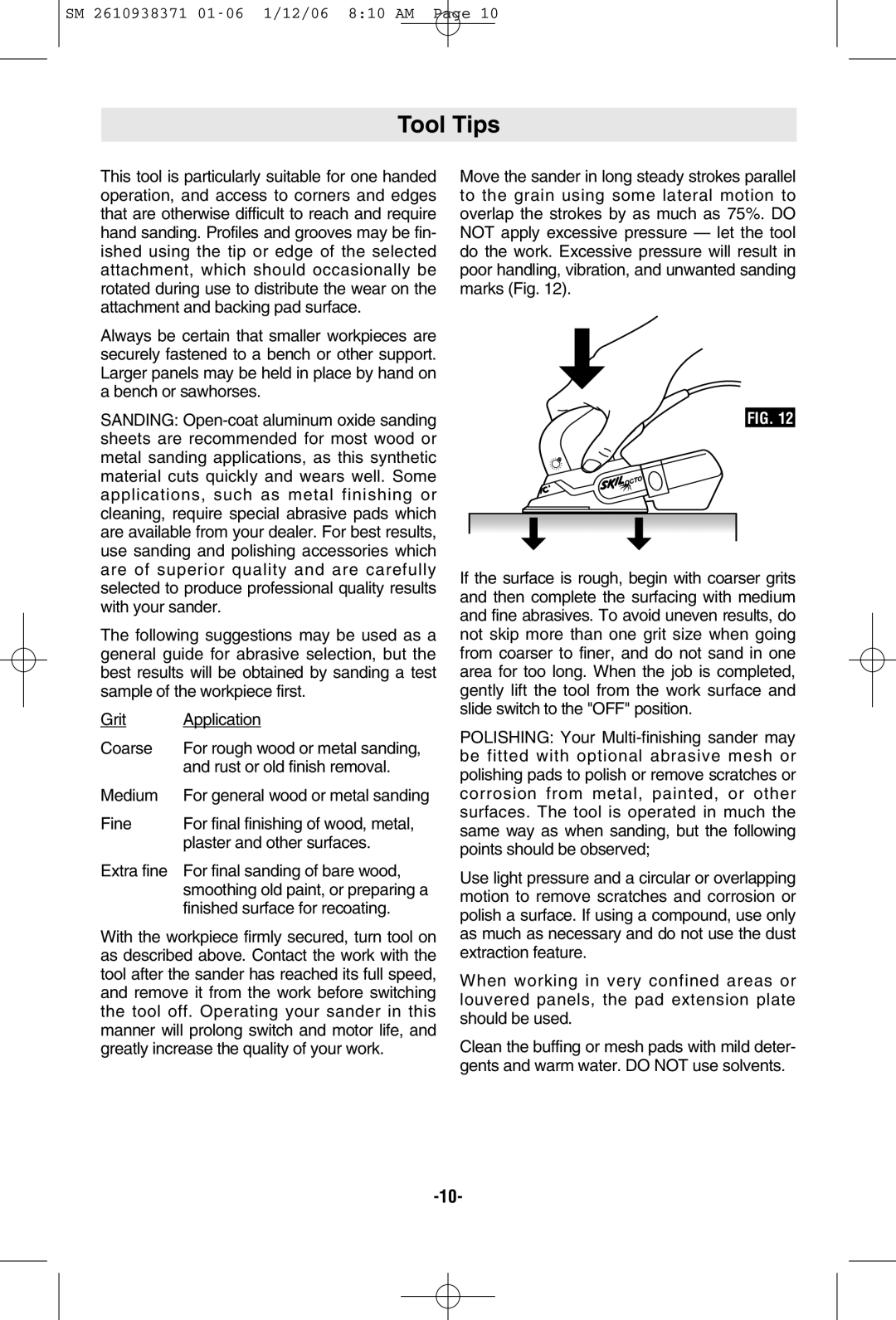
SM 2610938371
Tool Tips
This tool is particularly suitable for one handed operation, and access to corners and edges that are otherwise difficult to reach and require hand sanding. Profiles and grooves may be fin- ished using the tip or edge of the selected attachment, which should occasionally be rotated during use to distribute the wear on the attachment and backing pad surface.
Always be certain that smaller workpieces are securely fastened to a bench or other support. Larger panels may be held in place by hand on a bench or sawhorses.
SANDING:
The following suggestions may be used as a general guide for abrasive selection, but the best results will be obtained by sanding a test sample of the workpiece first.
Grit | Application |
Coarse | For rough wood or metal sanding, |
| and rust or old finish removal. |
Medium | For general wood or metal sanding |
Fine | For final finishing of wood, metal, |
| plaster and other surfaces. |
Extra fine | For final sanding of bare wood, |
| smoothing old paint, or preparing a |
| finished surface for recoating. |
With the workpiece firmly secured, turn tool on as described above. Contact the work with the tool after the sander has reached its full speed, and remove it from the work before switching the tool off. Operating your sander in this manner will prolong switch and motor life, and greatly increase the quality of your work.
Move the sander in long steady strokes parallel to the grain using some lateral motion to overlap the strokes by as much as 75%. DO NOT apply excessive pressure — let the tool do the work. Excessive pressure will result in poor handling, vibration, and unwanted sanding marks (Fig. 12).
FIG. 12
If the surface is rough, begin with coarser grits and then complete the surfacing with medium and fine abrasives. To avoid uneven results, do not skip more than one grit size when going from coarser to finer, and do not sand in one area for too long. When the job is completed, gently lift the tool from the work surface and slide switch to the "OFF" position.
POLISHING: Your
Use light pressure and a circular or overlapping motion to remove scratches and corrosion or polish a surface. If using a compound, use only as much as necessary and do not use the dust extraction feature.
When working in very confined areas or louvered panels, the pad extension plate should be used.
Clean the buffing or mesh pads with mild deter- gents and warm water. DO NOT use solvents.
